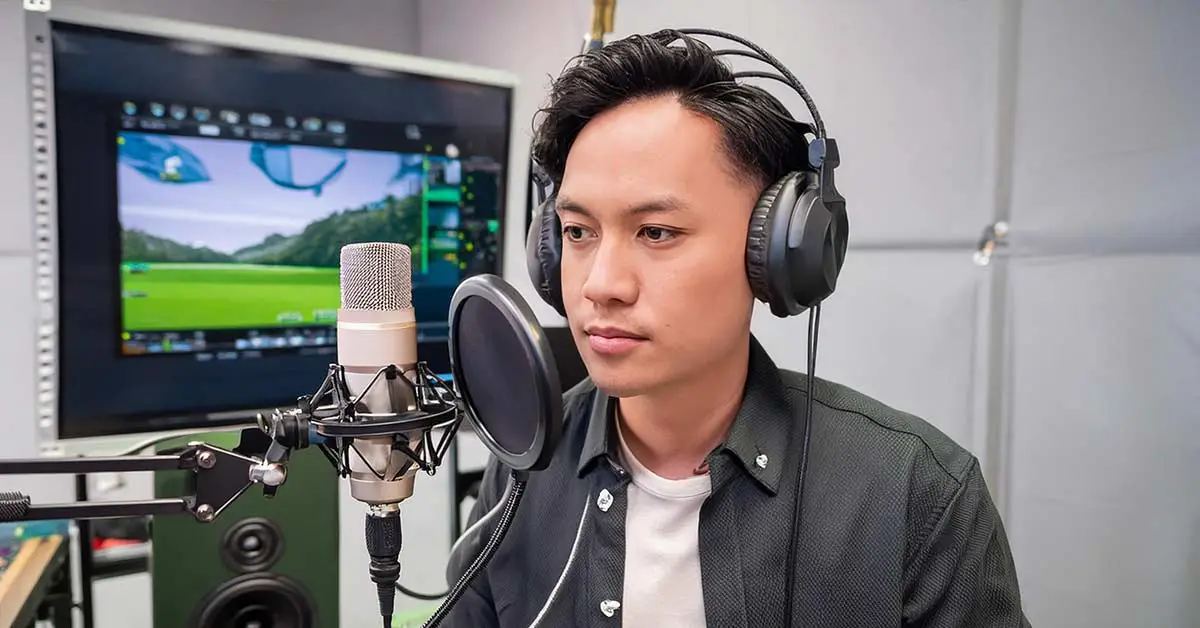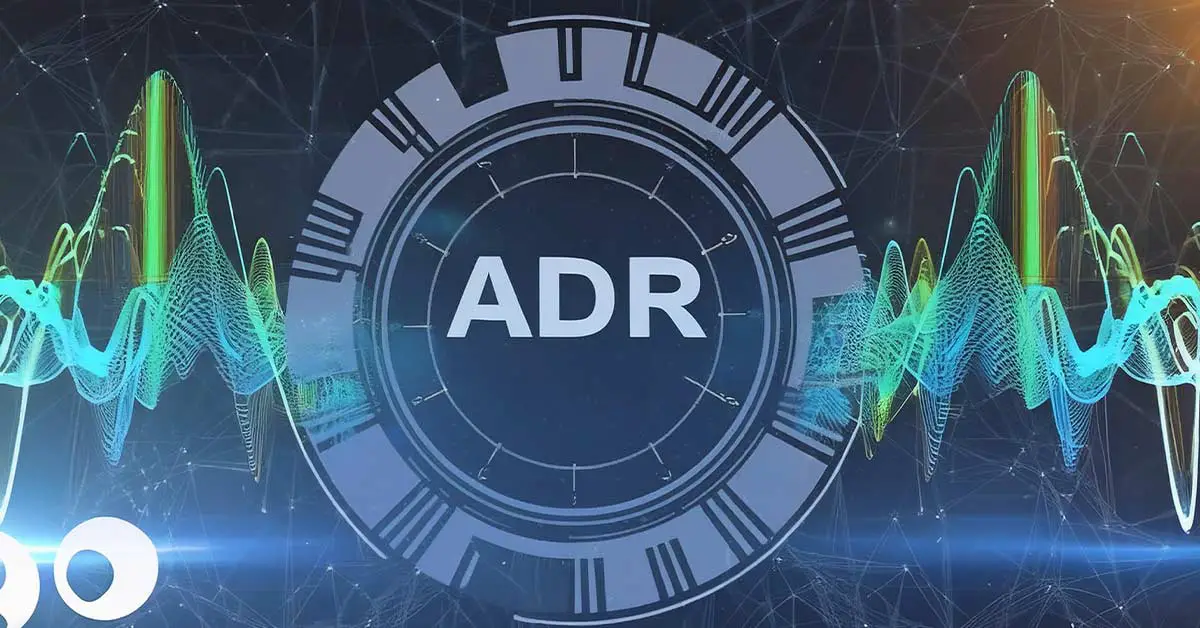Have you ever watched a movie and marveled at the crystal-clear dialogue, even in intense action sequences or crowded environments? Chances are, you were witnessing the magic of ADR (Automated/Automated Dialogue Replacement) in action.
Remember that iconic scene from “The Lord of the Rings: The Fellowship of the Ring” where Aragorn whispers, “There’s something down there” as the fellowship cautiously approaches the Mines of Moria? That line was likely recorded during an ADR session, ensuring perfect clarity and synchronization.
ADR, also known as dubbing or re-voicing, is a post-production process that allows filmmakers to record or replace dialogue after the principal photography has been completed.
It plays a crucial role in enhancing audio quality, fixing dialogue issues, and ensuring a seamless auditory experience for viewers. In this comprehensive guide, we’ll delve into the world of ADR, exploring its purpose, applications, and the intricate techniques involved in bringing flawless dialogue to the big screen.
What is ADR in Film?
ADR, or Automated/Automated Dialogue Replacement, is a post-production process in filmmaking where actors re-record their dialogue in a controlled studio environment.
This technique is used to replace or enhance the original production sound recorded on set, ensuring that the dialogue is clear, crisp, and free from any unwanted background noise or audio issues.
ADR is distinct from the production sound captured during filming. While production sound is recorded on set during the actual filming process, ADR is a separate process that takes place after principal photography has been completed. This allows filmmakers to address any dialogue issues that may have arisen during production, whether due to technical limitations, environmental factors, or creative choices.
The primary advantages of using ADR in filmmaking include:
- Improving dialogue clarity and intelligibility
- Fixing audio issues caused by background noise, equipment malfunctions, or poor production sound quality
- Enabling creative changes to dialogue, such as adding accents or altering lines
- Accommodating actor availability constraints during production
When is ADR Used?
ADR is employed in various situations throughout the filmmaking process to address a wide range of dialogue-related challenges. Here are some common scenarios where ADR becomes a necessity:
- Noisy Shooting Locations: Films shot in busy urban environments, near construction sites, or in locations with excessive background noise often require ADR to ensure clear and audible dialogue.
- Dialogue Clarity Issues: If an actor’s performance or delivery during filming results in unclear or muffled dialogue, ADR can be used to re-record those lines with improved clarity.

- Actors’ Unavailability During Production: Sometimes, actors are unavailable for reshoots or pickup shots due to scheduling conflicts or other commitments. ADR allows filmmakers to record any missing or additional dialogue lines during post-production.
- Creative Choices: Directors may opt for ADR to introduce accents, change line deliveries, or modify dialogue to better align with the creative vision or character development.
- Technical Issues: Equipment malfunctions, such as faulty microphones or recording devices, can compromise the quality of production sound. ADR provides a solution to address these technical issues.
The ADR Process
The ADR process is a carefully orchestrated endeavor that requires meticulous preparation, specialized equipment, and skilled professionals. Here’s an overview of the typical ADR workflow:
Pre-production Preparation:
- Script analysis to identify scenes and lines that require ADR
- Scheduling ADR sessions and coordinating with actors
- Creating ADR cue sheets with line readings and timecodes
ADR Session Setup:
- Setting up a soundproof ADR studio with the necessary recording equipment
- Calibrating microphones and ensuring proper sound levels
- Preparing the video playback system for cue reference

Cue Playback and Actor Preparation:
- Playing back the original scene with the actor’s performance as a reference
- Allowing the actor to review the scene and get into character
- Providing direction and guidance for line delivery and lip-syncing
Recording ADR Lines:
- Capturing the actor’s dialogue performance while watching the video cue
- Multiple takes may be recorded for each line to ensure the best possible performance
- Monitoring audio levels and quality throughout the recording process
Review and Refinement:
- Reviewing the recorded ADR lines for quality and synchronization
- Making adjustments or re-recording lines as needed
- Assembling the final ADR tracks for integration into the film’s audio mix
ADR Techniques and Best Practices
Successful ADR requires a combination of technical proficiency and artistic skill. Here are some key techniques and best practices employed by ADR professionals:
- Lip-syncing and Matching Mouth Movements: One of the most critical aspects of ADR is ensuring that the re-recorded dialogue matches the actor’s mouth movements on screen. Actors and ADR supervisors closely observe the video cue and carefully time the line delivery to achieve seamless lip-syncing.
- Maintaining Consistent Tone, Inflection, and Emotion: Actors must strive to recreate the same emotional tone, inflection, and delivery as the original performance. This helps maintain the authenticity and continuity of the character’s portrayal.

- Dealing with Background Noise and Ambiance: ADR studios are designed to be soundproof, but sometimes, background noise or ambiance from the original scene needs to be recreated. Foley artists and sound designers work closely with the ADR team to reproduce realistic environmental sounds.
- Looping and Group ADR: For scenes with multiple characters or crowd sequences, a technique called “looping” or “group ADR” is employed. In this process, multiple actors record their dialogue together, mimicking the on-set dynamics and allowing for more natural interactions.
Notable Examples of ADR in Movies
ADR has played a pivotal role in countless iconic movie scenes and dialogues. Here are a few notable examples that showcase the power and impact of ADR in filmmaking:
“The Lord of the Rings” Trilogy: Peter Jackson’s epic fantasy films extensively utilized ADR to enhance dialogue clarity and seamlessly blend different shooting locations. The infamous “You shall not pass!” line by Gandalf was captured during an ADR session.
“The Dark Knight” (2008): Christian Bale’s ADR work as Batman helped create the iconic, gravelly voice that became synonymous with the character. ADR allowed for precise control over the vocal performance.
“Jurassic Park” (1993): Steven Spielberg’s groundbreaking film relied on ADR to ensure clear dialogue during intense action sequences and dinosaur encounters, blending the actors’ performances with the CGI dinosaurs.
“Star Wars” Franchise: ADR has been a staple in the Star Wars universe, from dubbing alien languages to enhancing the clarity of iconic lines like “May the Force be with you.”
The Future of ADR
As technology continues to evolve, the ADR process is also adapting and embracing new advancements. Here are some trends and predictions shaping the future of ADR:
Advancements in Digital Editing and AI-Assisted ADR: Digital editing software and artificial intelligence (AI) are offering new tools and techniques for streamlining the ADR process. AI-assisted lip-syncing and dialogue replacement algorithms can potentially speed up the workflow and improve accuracy.

The Role of ADR in Animation, Video Games, and Other Media: ADR is not limited to live-action films. It plays a crucial role in animation, video games, and other interactive media, allowing for seamless dialogue recording and character voiceovers.
Increasing Demand for ADR Professionals: As the entertainment industry continues to grow and produce more content across various platforms, the demand for skilled ADR professionals, including actors, supervisors, and engineers, is expected to rise.
Immersive Audio Technologies: With the advent of immersive audio technologies like Dolby Atmos and spatial audio, ADR techniques may need to adapt to ensure dialogue clarity and positioning in these advanced sound environments.
Conclusion:
ADR is a vital component of the filmmaking process, enabling directors and sound designers to achieve exceptional dialogue quality and ensure a seamless auditory experience for audiences. From fixing production issues to enabling creative dialogue changes, ADR has played a pivotal role in countless iconic movie scenes and performances.
Behind every crystal-clear line of dialogue, there is a team of skilled professionals dedicated to the art of ADR. Actors must meticulously recreate their performances, maintaining consistent tone, inflection, and emotion. ADR supervisors and engineers work tirelessly to capture and refine the dialogue, ensuring seamless lip-syncing and integration with the film’s soundscape.
As technology continues to advance, the future of ADR promises even greater efficiency and creative possibilities. AI-assisted techniques, immersive audio technologies, and the growing demand for ADR professionals across various media platforms will shape the evolution of this essential craft.
So, the next time you watch a movie and marvel at the flawless dialogue, remember the intricate behind-the-scenes efforts that went into creating that seamless auditory experience.


